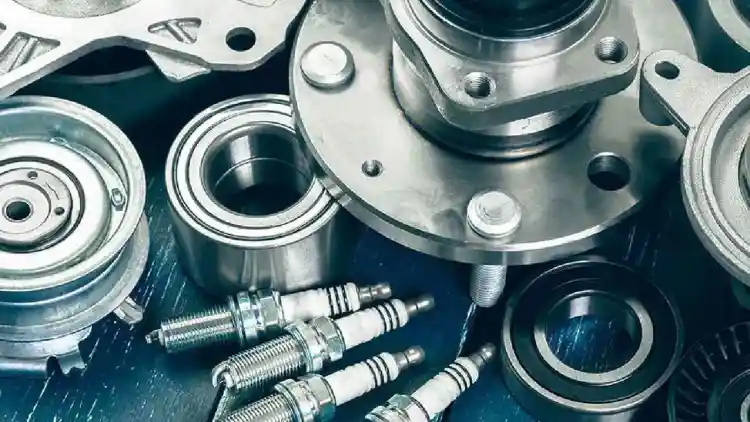- Methods to Identify Car Owner Details in Dubai
- Non-Government Methods to Verify Vehicle Details
- Why Identifying Car Owner Details is Crucial
Dubai is renowned for its luxurious lifestyle, stringent regulations, and advanced infrastructure. However, when dealing with automobiles, especially those with high price tags, ensuring transparency and authenticity in transactions is vital. For those seeking to identify the car owner from the license plate number only, Dubai offers reliable and efficient methods to verify vehicle ownership details.
In this article, we will explore various methods to uncover vehicle license plate number details, providing you with the essential tools to make informed decisions in Dubai's automotive landscape.
Methods to Identify Car Owner Details in Dubai

1. Roads and Transport Authority (RTA)
The Roads and Transport Authority (RTA) is Dubai's primary government body responsible for regulating transportation. It provides robust services that allow you to verify vehicle ownership details using the chassis number.
Steps to Use RTA for Vehicle Ownership Verification:
Visit the RTA Official Website.
Select the Technical Vehicle Status Certificate service.
Enter the chassis number of the vehicle.
A validation code is sent to the current owner via SMS for security purposes.
Request the owner to share the code to view car ownership details.
This process is ideal for buyers and sellers looking for a transparent transaction experience. The RTA also offers a vehicle expiry check feature to assess the vehicle’s lifespan and renewal requirements.
2. Emirates Vehicle Gate (EVG)
The Emirates Vehicle Gate (EVG) platform is another government-authorized service where you can identify car owner details using the license plate number.
How to Use EVG for License Plate Details:
Access the EVG Official Website.
Choose your preferred search method: Traffic Code Number, Plate Number, or License Number.
Specify the plate source (e.g., Dubai or Abu Dhabi) and plate color.
Click Search to retrieve relevant vehicle details such as outstanding fines.
EVG is especially useful for resolving fines and ensuring compliance with Dubai’s traffic regulations.
3. SMS Service for Quick Access

Dubai’s government offers a simple SMS service to identify vehicle license plate numbers and car owner details.
Steps to Use SMS for Vehicle Owner Details:
Compose a message in the format CAR [space] plate number.
Send the SMS to 4488.
You will receive an instant reply with essential details, including the car owner's name, registration date, and contact information.
This convenient option is perfect for those looking for quick verification without navigating websites.
4. Dubai Police Services
The Dubai Police provide an online service to verify car owner details using license plate numbers.
Steps to Use Dubai Police Website for Verification:
Visit the Dubai Police Official Website.
Navigate to the Vehicle Verification section under their services.
Input the required details—such as plate number or chassis number.
Retrieve the car owner details and other relevant vehicle information.
Dubai Police services ensure secure and lawful access to car ownership data, offering peace of mind during transactions.
Non-Government Methods to Verify Vehicle Details
While government services are reliable, there are non-governmental methods to identify car owner details in Dubai:
1. Contacting the Car Dealership
If the car was purchased through a dealership, you can request information regarding the previous owner and any outstanding penalties. Dealerships maintain detailed records of their transactions, making them a trustworthy source for verification.
2. Consulting the Insurance Provider
Insurance companies in Dubai store comprehensive records of insured vehicles and their owners. By reaching out to the insurance provider, you can obtain accurate information regarding the car owner and its history.
Why Identifying Car Owner Details is Crucial

Understanding car ownership details and vehicle license plate numbers is essential for ensuring transparency, avoiding scams, and adhering to Dubai's strict regulations. Whether you're buying a vehicle or verifying ownership, utilizing the tools above will help you make informed decisions.
In conclusion, Dubai offers numerous avenues for identifying car owner details from the license plate number only. From government platforms like RTA and EVG to SMS services and police websites, you can access reliable information with ease. If you're considering purchasing a car, these resources ensure a safe and secure transaction process.
For those who prefer flexibility, renting a car remains a fantastic option. Enjoy Dubai’s vibrant lifestyle without worrying about ownership complexities, and choose from a wide range of budget-friendly to luxury rental vehicles.
By employing the methods outlined above, you can confidently navigate Dubai's automotive market, ensuring transparency and compliance every step of the way.
Read more:
The Most Practical 2025 Guide to Shipping Cars Between Riyadh & Jeddah













